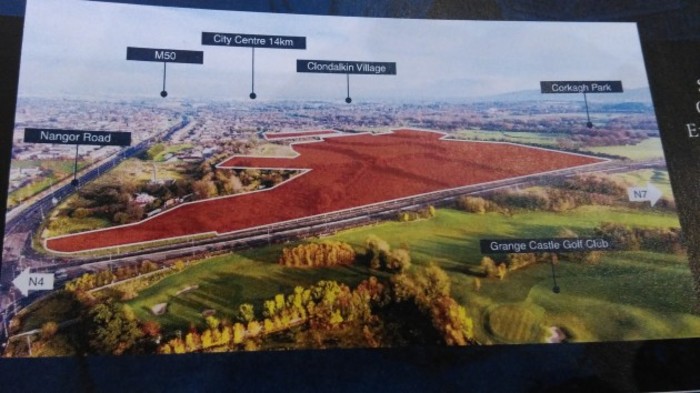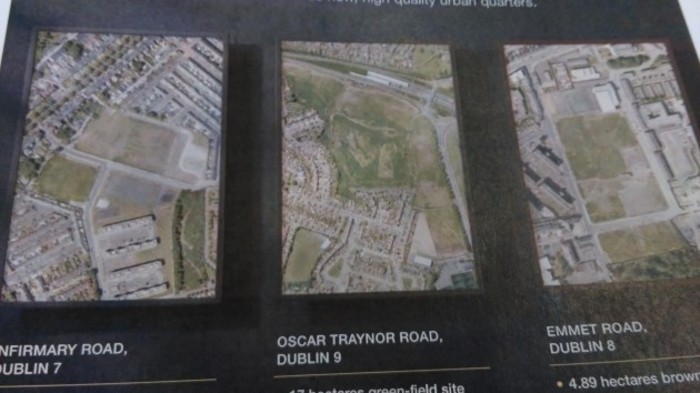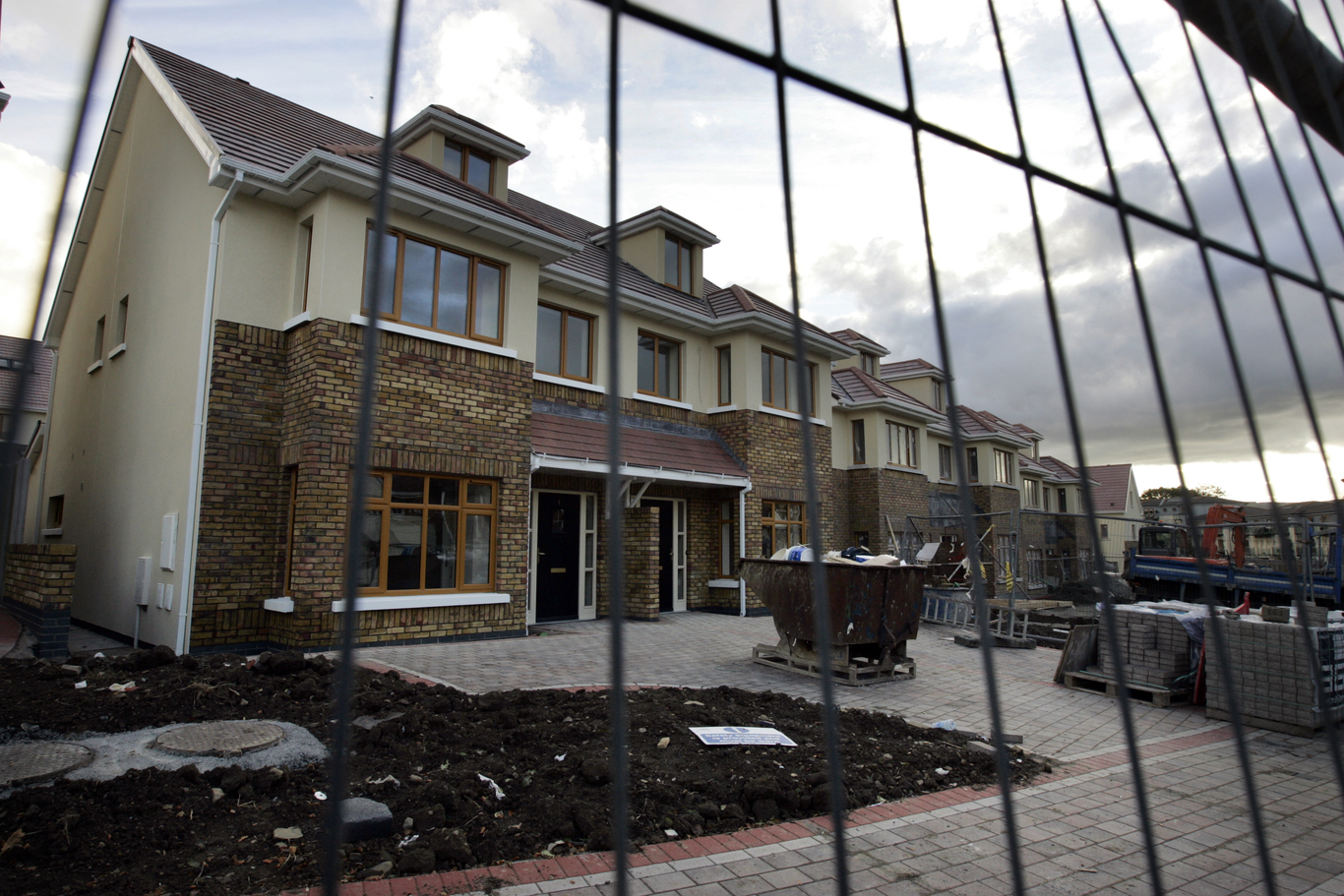Four plots of public land will be used for thousands of affordable homes in Dublin
Simon Coveney says state land banks could be developed for 50,000 new houses.
FOUR PLOTS OF land in Dublin will be used to build 3,000 homes under a new government strategy.
Housing Minister Simon Coveney today launched the Rebuilding Ireland Housing Land Map, which he called a key component of the state’s housing land strategy.
The map is a collation of data from an array of state departments, agencies and bodies.
It includes details of over 700 local authority- and Housing Agency-owned sites totalling some 1,700 hectares, as well 30 sites totalling around 200 hectares owned by state or semi-state bodies in the greater Dublin area and other major urban centres.
The map also includes 144 active sites where around 5,200 new dwellings are already under construction in the Dublin region.
As part of the launch, Coveney praised both South Dublin County Council and Dublin City Council for putting up four sites for development that will be used for up to 3,000 social housing units or affordable homes.
The sites are located in Kilcarbery in South Dublin:

The others are: Infirmary Road, Emmet Road and Oscar Traynor Road in Dublin city.

Coveney said that he wanted local authorities and developers to come up with business plans to develop the sites.
“I want all local authorities to take up the mantle and to bring forward sites as quickly as possible for development in this way,” he said.
“Opening up state land for mixed-tenure housing is a major policy intervention. If others control scarcity in terms of land supply, they control the market. I want the state to ensure that does not happen.”
Sell-off
Coveney denied, however, that the plan represented a “sell-off” of state assets.
He said that in some cases, such as for property belonging to semi-state CIÉ, the land banks formed part of workers’ pension funds, which meant developers would only be building on the properties under license.
In some cases, there will be a transfer of land, but in others the state agencies would keep the land for affordable rental accommodation.
“I believe in mixed-tenure communities, I don’t believe in segregation. We have to facilitate integration by design,” Coveney said.
“This is not about a sell-off of land. Some of these landbanks, local authorities will keep ownership of. Other state actors will stay involved if they don’t want to sell the land.”
He said that the state would “have to get the dividend” of any plan put forward for land, but said this was not necessarily a “financial dividend”.
Councils, he said, would have the final approval on any plan, saying that the deals would not be “quiet deals between chief executives and developers”.
Other sites
Coveney said that there were further plans being developed for projects across the country, such as in Galway’s docklands – a site he called “a gem”.
The docklands site is bordered by Ceannt Station and forms over 4.7 hectares of land, which Coveney said could be home to “very high” buildings.
In Dublin, Connolly Station, St Theresa’s Gardens and a number of inner-city sites have also been earmarked.
In Cork, 56 hectares at the Tivoli Docks in the city have been identified, as well as sites at St Kevin’s Hospital and Nash’s Boreen.
While the contents of the map have the potential to deliver 50,000 homes, Coveney said the total number of new units could be more.
“We could be much more ambitious but it’s important not to over promise. Some sites will not be viable at the moment for whatever reason. I think 50,000 is a realistic figure over four years.”
Written by Paul Hosford and posted on TheJournal.ie
Sign up to our newsletter to receive a regular digest of Fora’s top articles delivered to your inbox.






